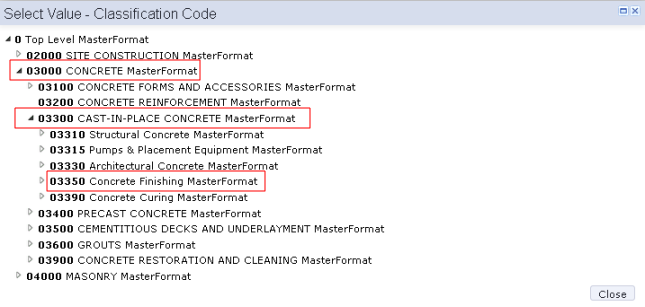classifications
Classifications categorize equipment, building systems, and building elements, as well as condition assessment and environmental sustainability assessment items by function and material.
Classifications can serve as a reference for analysis, evaluation, and monitoring during the feasibility, planning, and design stages of buildings. However, they are not limited to construction and can be used throughout a building’s life.
Classifications ensure consistency in building management over time, and from project to project. For example, if you use a classification standard, you can connect your condition assessment and environmental sustainability assessment items to industry-standard guidelines for replacement, maintenance, and repair costs.
You can establish multiple levels of classifications, adapted to your company's operating procedures and reporting requirements. For example, you might have a CONCRETE classification that is further divided into CAST-IN-PLACE and PRECAST classifications. These classifications can, in turn, have sub-classifications. For example, CAST-IN-PLACE might have CONCRETE FINISHING and CONCRETE CURING classifications.

The Archibus sample HQ database ships with MasterFormat classifications established by the Construction Specifications Institute (CSI). This standard includes such categories as Masonry, Roofing, Doors, Plantings, and Fire Protection. Other classification standards, such as OmniClass - Table 22, are also available. You can edit these default classifications as necessary for operations at your site.
You can also import classification standards as needed.